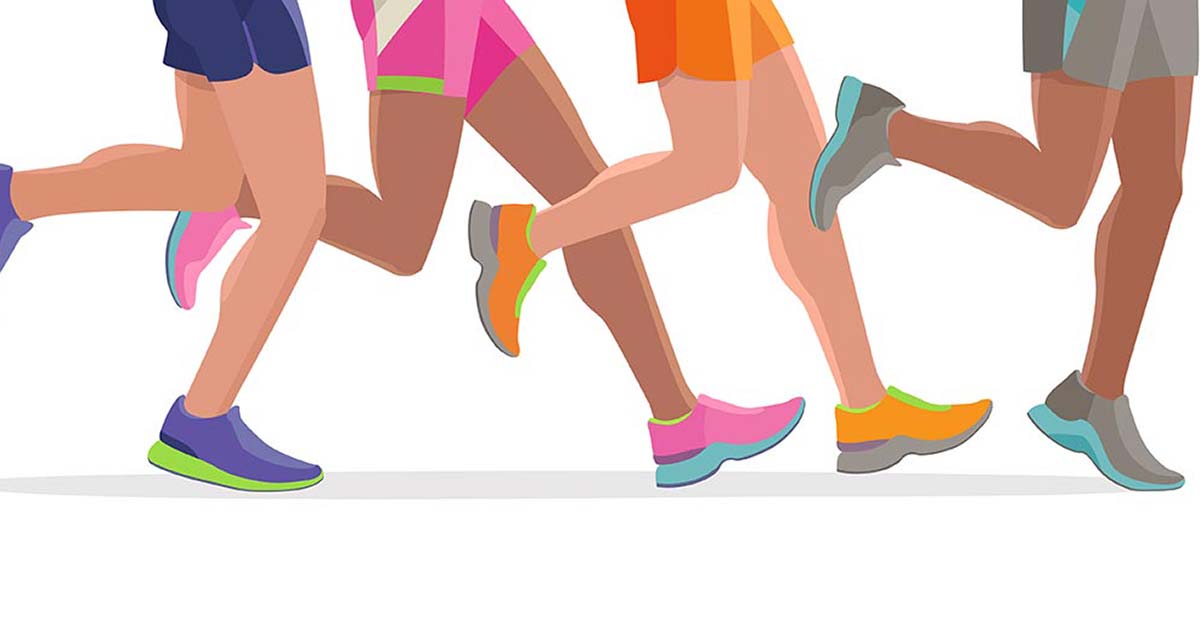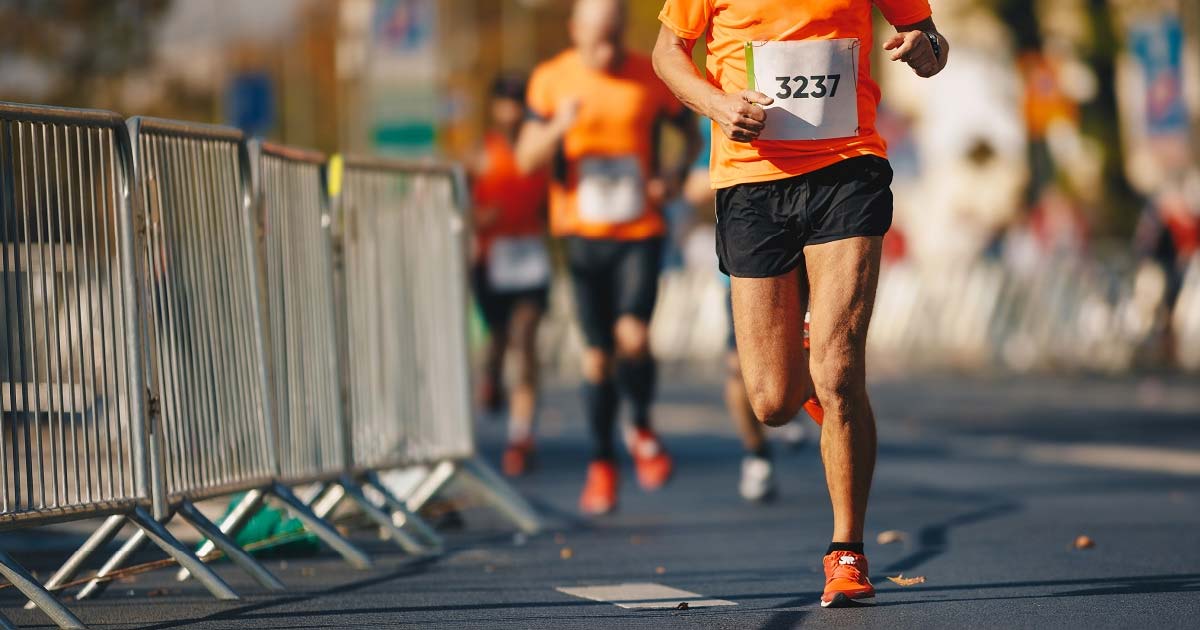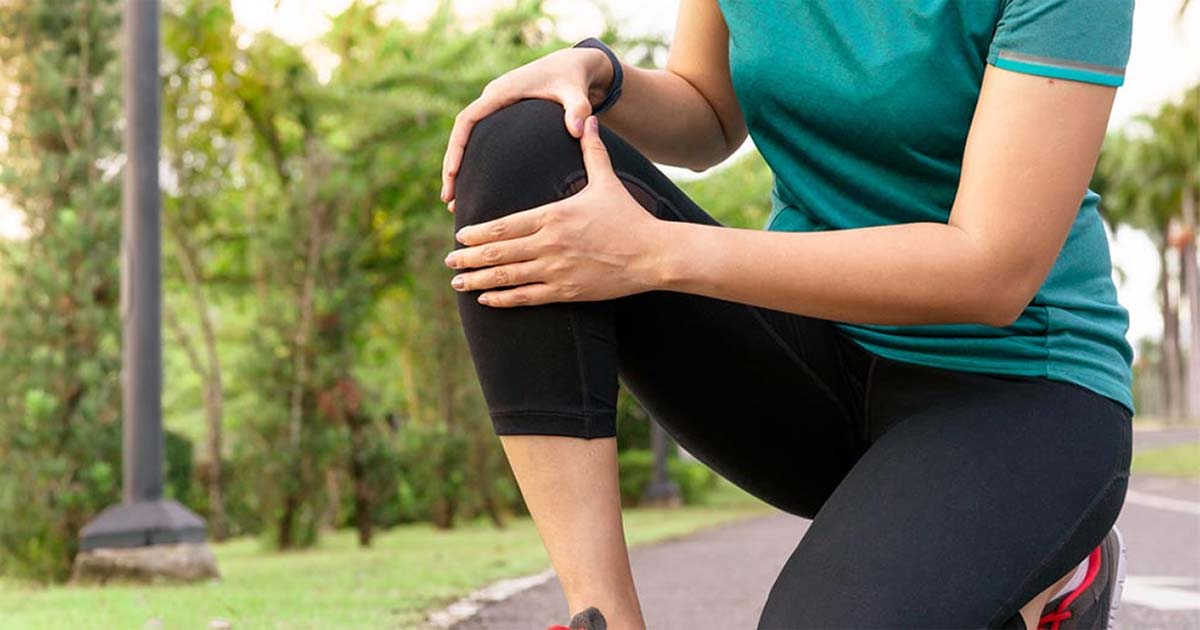
Advice to improve your movement, fitness, and overall health from the world's #1 in orthopedics.
Running Back-to-Back Marathons? Try This Training Plan
Planning to run back-to-back races? HSS physical therapist Yukiko Matsuzaki explains what to do between the races to set yourself up for success.
Advice to improve your movement, fitness, and overall health from the world's #1 in orthopedics.

“While running back-to-back marathons is challenging, you get to experience the exhilaration of crossing the finish line twice, earn two medals and gain bragging rights all with one training cycle,” she says. You might also be looking forward to the travel, camaraderie and swag associated with the races you’ve selected.
Whatever your backstory, what you do between those marathons is of vital importance to your health, safety and enjoyment. “After a marathon, proper recovery is a priority and begins as soon as you cross the finish line,” says Matsuzaki. “Rest and recovery are part of training, and they can positively influence your performance.”
She offers this advice for tailoring your recovery plan to ease out of one race and get pumped up for the next.
The hour after the first race
The 60 minutes after your first marathon is a crucial stage of your recovery, so try to stay focused on cooling down and fueling up before you conk out from exhaustion.
Cool down. After crossing the finish line, cool down with a light jog or a walk, and stay warm as you head to the post-race recovery zone. Gentle stretching or foam rolling is sufficient. Stretching is a key component of injury prevention and can help prevent or limit delayed-onset muscle soreness.
Fuel up. It’s important to replenish the carbohydrates, protein, water and electrolytes you lost during the race. Within 30 to 60 minutes of finishing your first marathon, hydrate with water or a sports drink, and eat a small meal consisting of a 4-to-1 ratio of carbohydrates to protein. Easy-to-digest examples of carbohydrates include bananas, bagels and granola bars. Good choices for protein include smoothies, yogurt or chocolate milk. If you don’t have the appetite to eat, try a sports recovery drink, which has both carbohydrates and protein. In the evening, eat another healthy meal and keep the fluids coming. Then, make sure to get a good night’s sleep.
The week after the first race
The seven days after your first race should be focused on recovery, which means taking it easier than normal while focusing on nutrition and sleep. While your mind will probably urge you to run, consider this a period of active rest. Dialing back training in this time period is just as helpful to your mental resilience as your physical recovery.
Eat smart. Have smaller meals throughout the day. Include plenty of lean meat or other lean protein to promote muscle repair, have high-quality complex carbohydrates for glycogen restoration and have healthy fats during meal prep or in whole foods like avocados.
Sleep well. Sleep is critical for restoring your body back to its pre-marathon state. It’s just as important for rebuilding at the cellular level as it is for recovering mentally and for feeling well overall. Aim for at least eight to nine hours of sleep per night. If this is challenging, consider taking several naps during the day, if you can manage it.
Loosen up. Daily stretching exercises, yoga and foam rolling will facilitate soft-tissue recovery. If possible, schedule a massage within a few days after your race. Benefits of massage include increased circulation and blood flow to the muscles and reduced soreness. It can also promote healing. Having a deep tissue or sports massage with a certified massage therapist is recommended.
Keep moving. Do some cross-training that focuses on light, nonimpact exercises like using the stationary bike and taking a relaxing swim. This will increase blood flow and further prevent your joints from getting stiff.
Run easy. You can start doing short, easy-effort runs this week. If you’re aiming to PR at your second race, choose moderate-intensity interval runs over longer distance runs.
Think small. If you have more than two weeks before your next marathon, you can add in a long run, but keep it to 10 to 12 miles at most. Remember: You just ran a 26.2 mile “long run”—and you’ll also need time to taper.
Two weeks after the first race
Revisit goals. It’s important to have realistic expectations for your second marathon. Well before race day, think about what happened in your first marathon and what you might accomplish in the next one. For example, if you crushed a PR during your first race, think of the second one as a leisurely run. If you used your first race as a test drive to work through jitters and race-day scenarios, then give it your all during the second event.
The day of your second race
Whatever you do, listen to your body—during this race and in general. If the mind is willing but the body is not, don’t risk an injury. Instead, walk away from your double-marathon month with your head held high and filled with lessons that you can apply next time.
Published 9/17/2021


